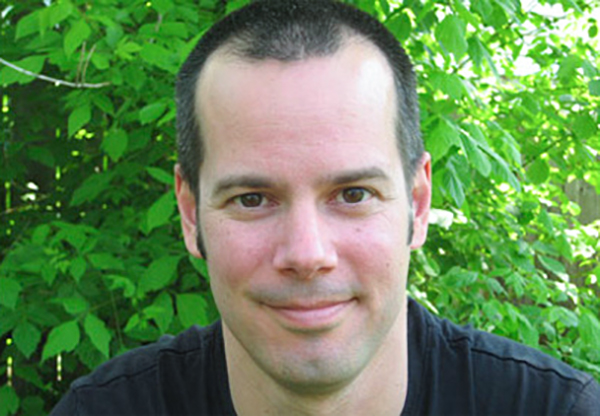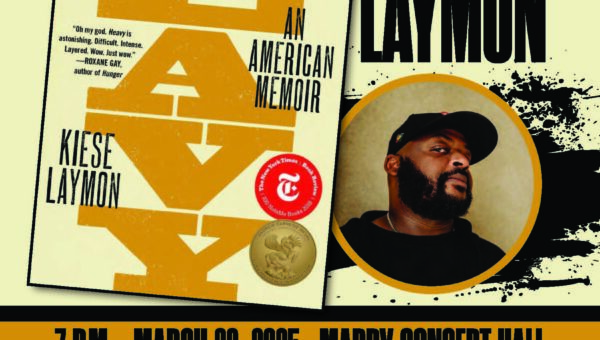Amy Wright: Your Essays on the Essay and Other Essays is an interactive digital book, inviting readers, for instance in “Hic Sunt Dracones,” to send pixelated balls flying with a swipe of the cursor over the word “dragon.” How is reader participation involved in your idea of what an essay does?
Eric LeMay: An essay doesn’t come to life until it reaches its readers. This moment—when the reader charges the writing with his or her intelligence, memories, cares, biases, quirks—is so fundamental to the experience of reading and writing, we usually accept it as a given, a fundament, and we build on it, but an electronic essay can let us rethink that moment: how else might a reader bring this essay to life? Clicks? Swipes? Can bouncing around a few pixelated balls in the context of an argument about art and containment make the reader’s experience of the essay feel more vital? Maybe so.
AW: We need dragons, you say, because the “world, like the World Wide Web, has no end, no edge.” Dragons, you later specify, represent boundaries “for us, who need limits if we’re to know these worlds and our places in them.” Will you give me an example of a metaphorical dragon that has helped you to know the world or your place in it?
EL: Perfection, especially that idea of artistic perfection, has become more and more menacing and dragon-like as I’ve grown as a writer and person. I began my career with a belief that the perfect artwork should not only be the aim of any serious artist, but that it was also redemptive, worth any measure of sacrifice. I think the belief came out of that desire we have when we’re young to really do something, really achieve something. I still believe in the transporting power of art, but experience has taught me that you get there—at least I get there—by fucking up and around.
AW: Boundaries and borders are a recurring theme in your work—meaning boundaries between the known and unknown, sanity and lunacy, etc. What is it about liminal territory that appeals to you?
EL: I’m certainly keen on the boundary between the known and the unknown. That’s the essence of the essay: launch into what you don’t know and want to know and see what comes of it and you. Sanity and lunacy? I sometimes worry my essays don’t have enough lunatics running through them, and even when they do, they’re strolling through a formal garden. This might be a cool example of a reader charging the work with her interests and concerns. What is it about the border between the sane and the mad that appeals to you, experimental essayist, talented poet, and seemingly-sane-person-but-perhaps-not Amy Wright?
AW: I’m likely drawn to your essay “The Lost Garden of Herman Haerlin” from In Praise of Nothing, because I grew up thirty miles from a mental health institute in the foothills of the Blue Ridge Mountains founded in 1887, so the photographs you include of the Victorian architecture of the Athens Lunatic Asylum look familiar. But what interests me about the boundary between sanity and lunacy is that it is fragile and culturally determined, as you make clear in the essay. The reasons you list that the patients were admitted include “nervous derangement, probably acquired while in the Army,” and “distress caused by her son, being killed in the late War,” revealing that even something as seemingly inarguable as sanity is defined by context. What inspired you to write and research this essay?
EL: The buildings of the asylum loom over the town, so its history feels very present, but I’d also heard a story about a “lost garden” that once was part of the asylum but was destroyed when the Army Corps rerouted the Hocking River through it in 1968. This garden was supposedly designed by Frederick Olmsted, the famous landscape architect who designed Central Park, around the conceit of playing cards: hearts, clubs, spades, and diamonds. As I tried to find out whether this garden had existed (it hadn’t), I was drawn into the real story of what and who had been there, which is so rich.
AW: Your writing often engages a social dimension. The multimedia essay, “drive, he sd,” for instance, includes text from the last fifteen users on Twitter to post using the hashtag #roadtrip. What does this unintentional collaboration add to the composition dynamic?
EL: Surprise! I love that little piece, precisely because I never know what it’s going to create. All of those road-trippers out there on the road, tweeting their high spirits. It’s a take on that great American genre that lets the travelers themselves create the content. Them and the twitterbots tweeting back to them. So I suppose it’s a collaboration among humans, yes, but also robots. I just triggered the essay, and I don’t think the robot that tweeted “Priceline launched features for easier road trips for travelers” realized it had made a contribution to the literary arts. Otherwise, it would have corrected that clunky prose rhythm.
AW: [Laughter] Who or what trained your prose ear?
EL: The way pianists practice scales, I practiced and practiced syntactical structures and formal verse. Nothing came or comes naturally to me, except maybe dogged perseverance.
AW: You also occasionally borrow the sentence structures of another writer in your finished work, such as E.B. White’s in your “Once More to the Lake.” What interests you most about writing into another’s rhythms?
EL: It’s another kind of collaboration. A mashup of self and other in syntax. As writers, we shape ourselves in the ways we put together words, so when we try out another writer’s prose rhythms, we can shake up who we are and maybe open up who we might be. More simply, it creates an interesting challenge: how do you put together a sentence that behaves like this one? How did White do it? When you take up the work of a writer a little further back in history, such as Milton or Wolff, it can also feel like an act of archeology: here’s how the English language once worked and might work again.
AW: In “Monster Essay,” you put in conversation Aristotle, Paul Ricoeur, and others on the power of metaphor. What do metaphors mean to you, and how does the ability to imagine them contribute to your modes of thinking?
EL: We all think metaphorically and all the more so if we’re artists. It’s how we come to understand what our work is and does. Lia Purpura, for example, likens her essays to miniatures, and Ander Monson likens his to hacks. In Montaigne’s case, his metaphor is a monster: his essays are like “monstrous bodies [“corps monstrueu”] patched and hurled up together of diverse members, without any certain or well-ordered figure, having neither order, dependency, or proportion, but casual and framed by chance.” That’s a fascinating image for thinking about your art and a long way from perfection.
AW: “Chance operations” is a poetic term for methods that generate poetry without the author’s will, perhaps used most famously by poet and composer John Cage. Would you relate any of your digital essays’ techniques to chance operations; or, how do you think of chance and intention in relation to your essays?
EL: Absolutely. My use of “surprise” in describing the Twitter essay is pretty much an aesthetic synonym for “chance.” I’ve been toying, quite literally, with a piece I’m calling “Lullabies for John Cage,” in which I set up a bunch of clanky toys and let our infant son knock them over. His rhythms—what he decides to swat, and not, and when—make up the music of the piece. It’s wonderful. Cage did us such a service by opening us up to art without craft. Although when craft exits, craftiness comes in. How do we coax in the right kind of chance? How do we create the operation that ends in something magical?
AW: In “Random Baby,” you cite the mind-boggling potential for variation in any human birth as you consider fatherhood. Now that you and your wife have had your first baby, have you begun to see evidence of his singular character?
EL: Oh yes, singular and inexorable. Developmentally, he’s a charging rhino.
AW: If he were a prose rhythm, whose might he be?
EL: He’s a poem, for sure. His name comes from La Chanson de Roland, the French epic. In that poem, Roland carries an ivory horn called an oliphant that makes a “mighty blast” when he blows it. That rhythm sounds about right.
AW: What might you say makes you a singular human being?
EL: Interesting question. When I was working on that essay and learning that a single fertilized egg holds the potential for about 4,000,000,000,000,000 genetically distinct babies, I never thought of those statistics in regard to those of us who are already here—how statistically impossible it is that we somehow became us. I suppose I think of myself more in terms of commonalities and what I share with others. That’s a trait I’d say is worth fostering at this moment in our country’s divisive public life. But you’re right: we’re all miracles.




